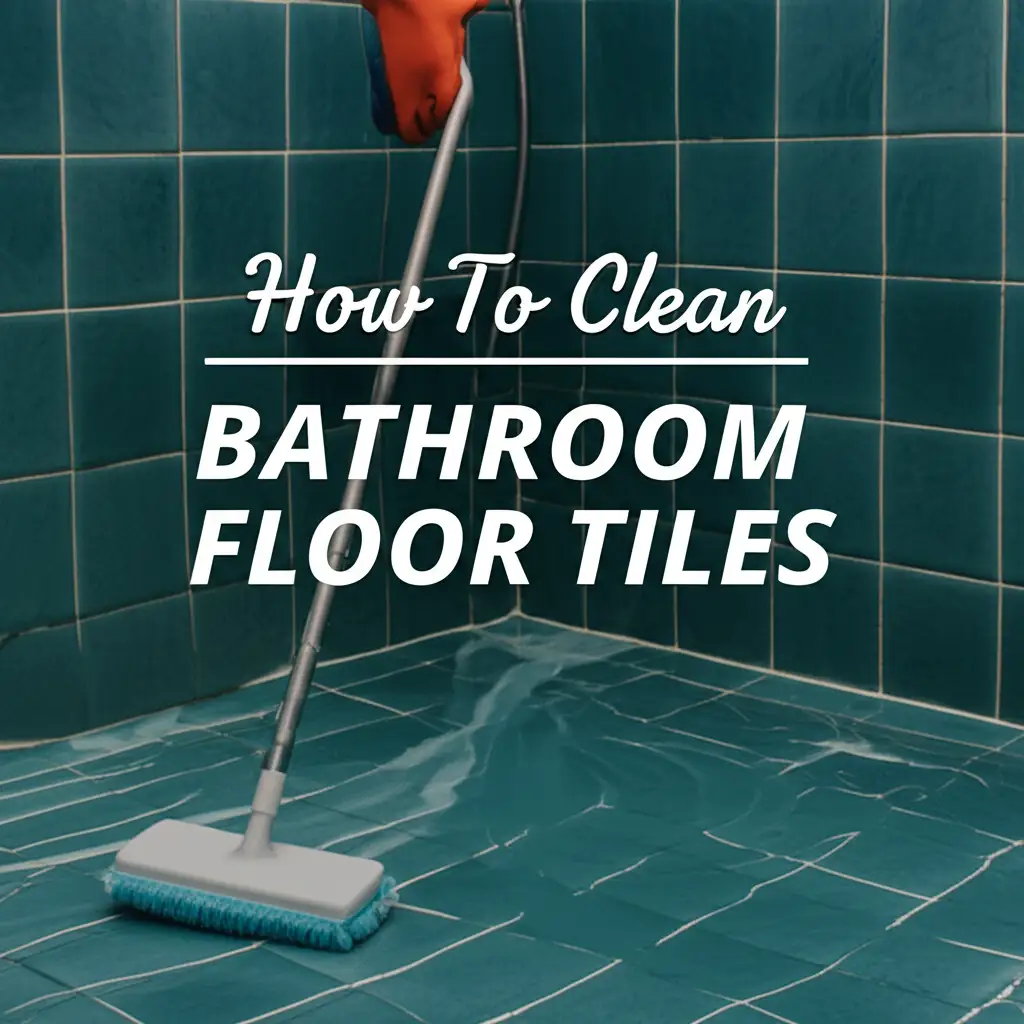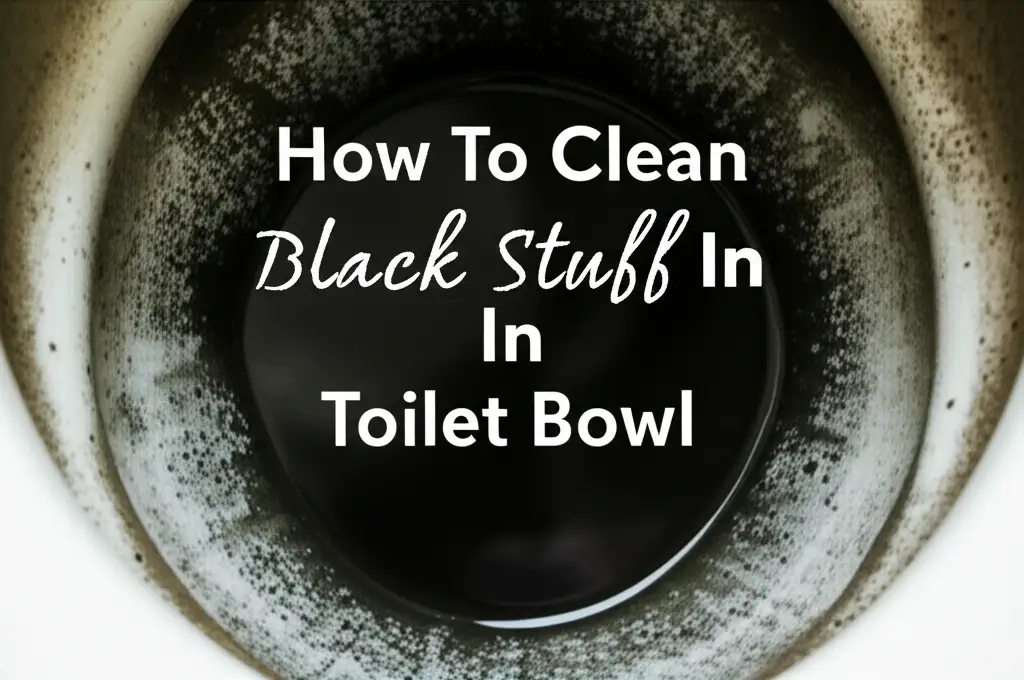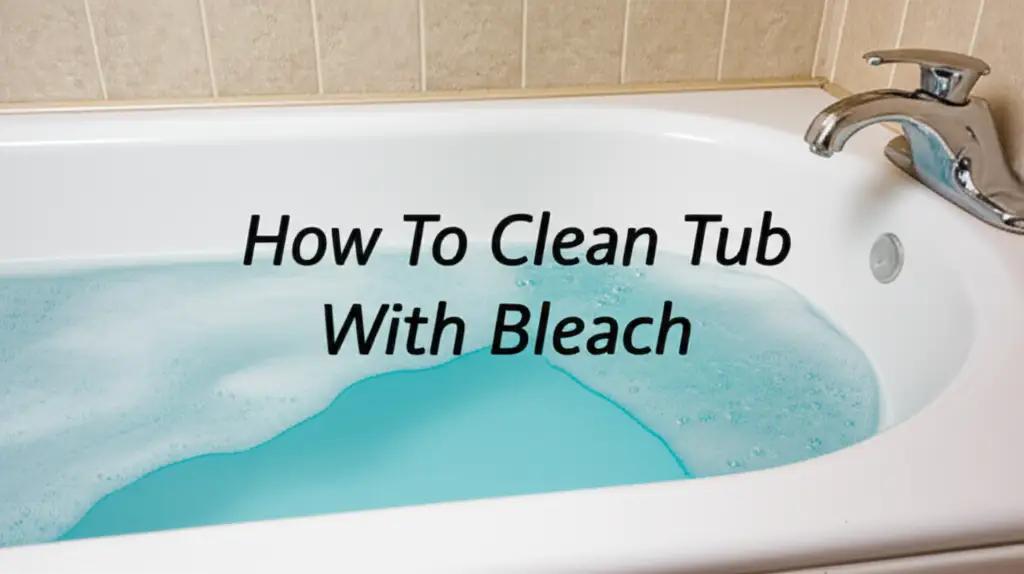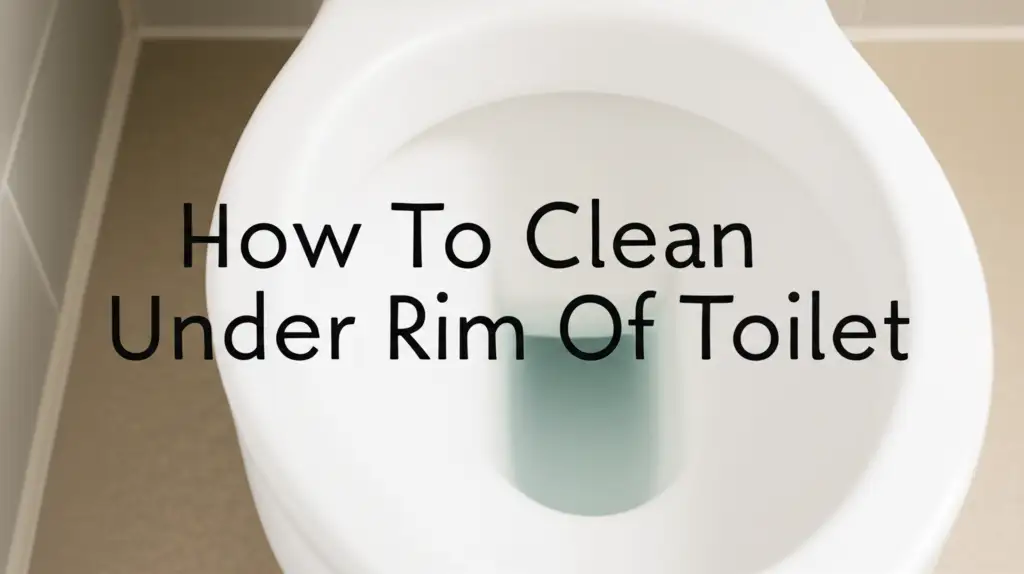· Bathroom Cleaning · 17 min read
How To Clean Bathroom Floor Tiles

Mastering How to Clean Bathroom Floor Tiles Effectively
Does your bathroom floor look dull, despite regular sweeping? Bathroom floor tiles collect dirt, grime, and soap scum quickly. This build-up makes your bathroom feel less clean. Learning how to clean bathroom floor tiles correctly transforms your space. It makes your bathroom fresh and inviting.
I understand the frustration of a grimy floor. This guide helps you achieve sparkling results. We will cover preparation, choosing cleaners, and tackling tough stains. You will learn specific methods for different tile types. We also discuss essential tools and ongoing maintenance. Get ready to revitalize your bathroom floor.
Takeaway
- Identify your bathroom floor tile type before cleaning.
- Gather necessary tools and appropriate cleaning agents.
- Always pre-clean the area by removing loose debris.
- Pay special attention to cleaning the grout lines.
- Maintain cleanliness with regular, consistent care.
How to Clean Bathroom Floor Tiles: A Quick Answer
To effectively clean bathroom floor tiles, start by sweeping or vacuuming away loose dirt. Apply a suitable cleaning solution, such as diluted mild soap, vinegar, or a specialized tile cleaner, based on your tile type. Scrub tiles and grout, then rinse thoroughly with clean water. Finally, dry the floor completely to prevent water spots and mildew growth.
Preparing Your Bathroom Floor for a Deep Clean
A clean floor starts with good preparation. Skipping this step makes the actual cleaning harder. Proper preparation protects you and your tiles. It ensures a more effective cleaning process.
You want the best outcome from your effort. Taking a few minutes to prepare helps immensely. This section covers necessary safety steps and initial debris removal. We make sure you are ready for a thorough clean.
Essential Safety Precautions
Your safety is important when cleaning. Cleaning agents can cause skin irritation or respiratory issues. Always protect yourself before you start. This prevents accidents and discomfort.
Wear rubber gloves to shield your hands from harsh chemicals. If using strong cleaners, ensure the bathroom is well-ventilated. Open windows or turn on the exhaust fan. Protect your eyes with safety goggles. This prevents splashes from reaching them.
Removing Loose Debris and Obstacles
Bathroom floors collect hair, dust, and other debris. You must remove these before wet cleaning. Wetting loose dirt turns it into muddy streaks. This creates more work for you.
Start by removing bath mats, waste bins, and any items from the floor. Use a broom or a vacuum cleaner with a hard floor attachment. Sweep or vacuum thoroughly into corners and under fixtures. Pick up any large pieces of debris by hand. This step ensures you are cleaning the tiles themselves, not just pushing dirt around.
Choosing the Right Cleaner for Your Bathroom Floor Tiles
Different tile types require different cleaning approaches. Using the wrong cleaner can damage your floor. It can also leave streaks or dull finishes. Knowing your tile type is the first step to proper care.
I always recommend checking the manufacturer’s guidelines for your specific tiles. If you do not have those, this guide helps. We will explore safe and effective cleaners for common bathroom tile materials. You want a cleaner that works without harming your floor.
Ceramic and Porcelain Tile Cleaning Solutions
Ceramic and porcelain tiles are durable and popular choices. They resist water and stains well. This makes them relatively easy to clean. You have many options for cleaning these types.
For everyday cleaning, a mild dish soap solution works wonders. Mix a few drops of dish soap into a bucket of warm water. This solution cuts through soap scum and general grime. For tougher dirt, use a mixture of white vinegar and water (1:1 ratio). Vinegar is acidic and breaks down mineral deposits. Always test vinegar on a small, hidden area first, though it is generally safe for glazed ceramic and porcelain. Do not use abrasive cleaners or steel wool; they can scratch the glaze.
Natural Stone Tile Care
Natural stone tiles, like marble, travertine, or slate, are beautiful. They also require special care. These materials are porous and react poorly to acidic cleaners. Using the wrong product causes etching and permanent damage.
Never use vinegar, lemon juice, or abrasive cleaners on natural stone. These acids eat away at the stone’s surface. Instead, opt for pH-neutral stone cleaners. These are specifically formulated not to harm the stone. You can find them at hardware stores or tile specialty shops. For light cleaning, warm water and a small amount of mild, pH-neutral dish soap can work. Always rinse thoroughly and dry immediately to prevent water spots. How to clean marble shower floor offers more insights into caring for specific natural stone surfaces, which often applies to floor tiles as well.
Vinyl and Linoleum Tile Considerations
Vinyl and linoleum tiles are resilient and budget-friendly. They are also relatively easy to maintain. These floors can be damaged by harsh chemicals. Avoid using abrasive scrubbers or strong solvent-based cleaners.
A simple solution of warm water and a few drops of mild dish soap is perfect for these floors. Mop the floor with this mixture. You can also use a cleaner specifically designed for vinyl or linoleum. Avoid excessive water, as it can seep into seams and loosen adhesive over time. Always wring out your mop well.
Step-by-Step Guide to Cleaning Bathroom Floor Tiles
Cleaning bathroom floor tiles follows a logical order. A systematic approach ensures you do not miss any spots. It also helps you work efficiently. I follow these steps every time for sparkling results.
This section breaks down the actual cleaning process. We cover mixing your solution, scrubbing, rinsing, and drying. Each step plays a role in achieving a truly clean floor. Pay attention to each part for the best outcome.
Mixing Your Cleaning Solution
Before you start scrubbing, prepare your cleaning solution. Always follow the product’s instructions for pre-made cleaners. For homemade solutions, precise mixing is important. This ensures effectiveness and safety.
If using dish soap, add a few drops to a bucket of warm water. Swirl it gently to create suds. For vinegar solutions (on ceramic/porcelain), mix equal parts white vinegar and warm water. For natural stone, use a specialized pH-neutral cleaner mixed according to its label. Always start with a small amount of cleaner. You can always add more if needed.
Mopping and Scrubbing Techniques
Now the real work begins. The method you use depends on the level of dirt. For general cleaning, a mop works well. For tougher spots, direct scrubbing is needed.
Dip your mop into the cleaning solution, wring it out well. Mops should be damp, not dripping. Mop small sections of the floor, working from the furthest point toward the door. For stubborn spots, apply a bit more solution directly. Use a soft-bristled brush or a non-abrasive scrub pad for focused scrubbing. Pay attention to areas around the toilet and shower.
Rinsing for a Spotless Finish
Rinsing is a critical step many people overlook. Leaving cleaner residue on tiles creates a sticky film. This film attracts dirt faster. It also makes your floor look dull and streaky.
Fill a clean bucket with fresh, plain water. Rinse your mop thoroughly until it is clean. Mop the floor again with the clean water, working in small sections. Rinse your mop frequently in the clean water. You might need to change the rinse water multiple times if your floor is very dirty. This ensures all cleaner residue is removed.
Drying to Prevent Water Spots and Mildew
Drying the floor completely is the final, crucial step. Air drying often leads to water spots. It can also encourage mildew growth, especially in a humid bathroom. A dry floor looks cleaner and stays cleaner longer.
Use a clean, dry microfiber mop or several clean towels. Mop or wipe down the entire floor immediately after rinsing. Work quickly to absorb all moisture. You can also point a fan at the floor to speed up drying. Ensure every tile and grout line is dry to the touch. This prevents new grime from settling and keeps your bathroom smelling fresh.
Tackling Stubborn Stains and Grout Grime on Bathroom Floors
Even with regular cleaning, some bathroom floor issues persist. Stubborn stains and dirty grout lines are common challenges. They make an otherwise clean bathroom look unkempt. I know how frustrating these can be.
This section provides targeted solutions for these tough problems. We will cover hard water stains, soap scum, and effective grout cleaning methods. We also address mold and mildew. These tips help you achieve a truly deep clean.
Dealing with Hard Water Stains and Soap Scum
Hard water leaves mineral deposits that appear as white or chalky spots. Soap scum is a greasy film left by soap and minerals. Both are common on bathroom floor tiles, especially near showers and sinks. These stains require specific acidic treatments.
For hard water stains on ceramic or porcelain, a white vinegar solution often works best. Mix equal parts vinegar and water. Apply it directly to the stain and let it sit for 5-10 minutes. Then scrub with a stiff brush. For tougher soap scum, commercial soap scum removers are available. Always check if the product is safe for your specific tile type. For natural stone, avoid vinegar. Instead, use a poultice specifically designed for mineral stains on stone.
Effective Grout Cleaning Strategies
Grout is porous and traps dirt, grime, and mold easily. Dirty grout makes the entire floor look dingy. Regular cleaning is essential for grout. Sometimes, it needs a more focused approach.
For discolored grout, create a paste using baking soda and water. Apply the paste to the grout lines and let it sit for 10-15 minutes. Scrub with a stiff-bristled brush, like a grout brush or an old toothbrush. You can also spray vinegar over the baking soda paste for a fizzing action. Rinse thoroughly afterwards. For heavily stained or moldy grout, an oxygen bleach solution (mixed according to directions) can be effective on non-porous tiles. You might find more specific guidance on how to clean shower tiles and grout or explore methods on how to clean floor grout without scrubbing for less effort.
Removing Mold and Mildew from Tile Surfaces
Mold and mildew thrive in the damp, warm environment of a bathroom. They appear as black, green, or pink fuzzy spots. These growths are unhealthy and unsightly. Addressing them quickly prevents spreading.
For mild mold, a solution of one part bleach to three parts water works on ceramic and porcelain tiles. Apply it directly to the affected area. Let it sit for 15-30 minutes, then scrub with a brush. Rinse well afterwards. For natural stone, bleach is too harsh. Use a hydrogen peroxide solution (3% concentration) or a commercial mold remover designed for stone. Ensure good ventilation when using bleach. This helps prevent respiratory irritation.
Specialized Cleaning for Different Bathroom Tile Types
Not all bathroom floor tiles are the same. Their unique properties dictate the best cleaning methods. What works for ceramic might harm natural stone. Understanding these differences protects your investment.
I want to ensure you clean your specific tiles correctly. This section dives deeper into the care for common bathroom tile materials. We cover their specific needs. You will gain confidence in handling each type.
Deep Cleaning Ceramic and Porcelain Tiles
Ceramic and porcelain tiles are among the most popular choices. They are durable, water-resistant, and relatively low maintenance. Their glazed surfaces make them resistant to stains and easier to clean. This means you have many options.
For a deep clean, begin by sweeping and vacuuming. Then, use a solution of warm water and a non-abrasive cleaner. Mild dish soap or a dedicated tile cleaner works well. Mop the entire floor, working in small sections. For stubborn grime, use a scrub brush on individual tiles. Rinse thoroughly with clean water to remove all residue. Always dry the floor completely afterwards to prevent water spots. You can find more detailed instructions specific to these materials on how to clean ceramic floor tiles.
Caring for Natural Stone Bathroom Floors
Natural stone tiles, like marble, granite, or slate, offer beauty and luxury. They are also porous and require gentle, specific care. Acids, strong chemicals, and abrasive cleaners can permanently damage them. Proper care preserves their beauty.
Always use pH-neutral cleaners specifically formulated for natural stone. Avoid vinegar, lemon juice, or harsh detergents. These can etch the stone’s surface. Mop with a soft cloth or sponge, using the stone cleaner diluted according to instructions. Wipe up spills immediately to prevent staining. After cleaning, rinse the floor thoroughly with plain water. Dry the stone surface completely to avoid water spots and mineral deposits. Regularly sealing natural stone is also important. This helps protect against stains and moisture penetration. For specific stone care, see resources like how to clean marble shower floor.
Maintaining Vinyl and Luxury Vinyl Tiles
Vinyl and luxury vinyl tiles are resilient and budget-friendly. They resist water well and are comfortable underfoot. These synthetic materials are quite forgiving. However, they still require the right cleaning approach.
Avoid harsh chemicals or abrasive scrubbers, which can damage the finish. For daily cleaning, a damp mop with warm water and a few drops of mild dish soap is usually sufficient. Mop the floor, ensuring you do not over-saturate it. Excessive water can seep into seams and loosen adhesive over time. For tougher marks, a soft nylon brush can gently scrub the spot. Always rinse with clean water to remove any soap residue. Dry the floor completely to prevent slipping and to ensure a streak-free finish.
Tools and Equipment for Efficient Bathroom Tile Cleaning
Having the right tools makes a big difference. The proper equipment speeds up the cleaning process. It also helps you achieve better results. I always make sure my cleaning arsenal is ready.
This section covers the essential items for cleaning bathroom floor tiles. We discuss mops, brushes, and specialized equipment. Using the correct tools protects your tiles. It also saves you time and effort.
Brushes and Mops
Basic tools are often the most effective. A good quality mop is essential for general cleaning. Different types of brushes target specific areas. These tools help you reach every spot.
For general floor cleaning, a microfiber flat mop works well. It picks up dirt effectively and is easy to wring out. For scrubbing tiles, a stiff-bristled brush is important. Look for brushes with nylon bristles. They are effective without scratching most tile types. An old toothbrush or a dedicated grout brush is indispensable for cleaning grout lines. These small brushes allow you to apply pressure directly to the narrow seams.
Steam Cleaners and Specialized Tools
Sometimes, basic tools are not enough. Steam cleaners offer a powerful, chemical-free option. Specialized tools can also make tough jobs easier. These options provide deeper cleaning.
A steam cleaner uses hot vapor to sanitize and lift grime. It is excellent for deep cleaning both tiles and grout. Steam works by loosening dirt without harsh chemicals. Always check if your tile type is suitable for steam cleaning; natural stone might not be. For extremely stubborn grout stains, consider a grout-cleaning machine or a rotary brush attachment for a drill. These tools provide extra scrubbing power. They reduce manual effort significantly.
Maintaining Your Bathroom Floor Tiles for Lasting Cleanliness
Cleaning is not a one-time event. Regular maintenance keeps your bathroom floor looking its best. Consistent care prevents dirt and grime from building up. This saves you from frequent deep cleaning sessions.
I believe prevention is key. This section outlines simple habits for ongoing cleanliness. We cover daily tasks and quick fixes. These tips help maintain that “just cleaned” sparkle.
Regular Sweeping and Vacuuming
Loose debris accumulates quickly on bathroom floors. Hair, dust, and lint settle daily. Regular removal prevents this debris from being ground into tiles and grout. This makes your deep cleans less frequent.
Make it a habit to sweep or vacuum your bathroom floor every day or every other day. Use a soft broom or a vacuum cleaner with a hard floor attachment. Pay attention to corners and around the toilet. This simple step removes the surface layer of dirt. It stops grime from building up.
Addressing Spills Immediately
Accidents happen. Spills, whether water, toothpaste, or makeup, can stain tiles or grout if left unattended. Prompt action is crucial. This prevents potential damage and stubborn marks.
Wipe up spills as soon as they occur. Use a clean cloth and plain water for most spills. For oily substances, a dab of mild dish soap might be needed. Rinse the area immediately after cleaning the spill. This prevents sticky residues. Quick action saves you from tougher stain removal later.
Sealing Grout for Protection
Grout is porous and absorbs moisture and dirt. This leads to discoloration and mold growth. Sealing your grout creates a protective barrier. This barrier repels water and stains.
After a thorough grout cleaning, apply a grout sealer. Grout sealers are available at hardware stores. Follow the product instructions for application. Typically, you apply the sealer to clean, dry grout lines. Let it cure for the recommended time. Reapply the sealer every one to two years, or as the product suggests. This protective layer makes your grout much easier to clean. It also extends the life of your grout.
Frequently Asked Questions About Cleaning Bathroom Floor Tiles
Q1: How often should I clean bathroom floor tiles?
For optimal hygiene and appearance, I recommend sweeping or vacuuming daily or every other day. A light damp mop cleaning with a mild solution should happen weekly. A more thorough deep clean, including grout scrubbing, is beneficial monthly or bi-monthly, depending on traffic and how quickly your bathroom gets dirty. Regular maintenance prevents heavy build-up.
Q2: Can I use vinegar on all bathroom tiles?
No, you cannot use vinegar on all bathroom tiles. White vinegar is safe and effective for glazed ceramic and porcelain tiles. It is acidic and helps remove soap scum and mineral deposits. However, never use vinegar on natural stone tiles like marble, travertine, or granite. Its acidity will etch and permanently damage the stone’s surface, causing dull spots.
Q3: What is the best way to clean discolored grout?
The best way to clean discolored grout involves a baking soda paste. Mix baking soda with water to form a thick paste. Apply this paste directly to the grout lines and let it sit for 10-15 minutes. Scrub vigorously with a stiff-bristled grout brush or an old toothbrush. Rinse thoroughly with clean water. For tough stains, a mixture of hydrogen peroxide or oxygen bleach (for non-porous tiles) can also work.
Q4: How do I prevent mold on bathroom floor tiles?
To prevent mold on bathroom floor tiles, ensure good ventilation. Use an exhaust fan during and after showers. Wipe down wet surfaces, especially around the shower and toilet, after use. Keep the bathroom as dry as possible. Regularly clean your tiles and grout with anti-mold cleaners. Applying a grout sealer also helps prevent moisture absorption.
Q5: Is steam cleaning good for bathroom tiles?
Yes, steam cleaning is generally excellent for bathroom tiles. It uses hot steam to sanitize and loosen dirt and grime without harsh chemicals. This makes it effective for both tiles and grout. However, exercise caution with natural stone tiles, as extreme heat can sometimes be an issue. Always check your tile manufacturer’s recommendations before steam cleaning.
Q6: What’s the difference between cleaning and sealing grout?
Cleaning grout removes existing dirt, grime, and stains from its surface and pores. Sealing grout, on the other hand, does not clean it. Instead, it applies a protective barrier over the clean grout. This sealant prevents moisture, dirt, and stains from penetrating the porous grout lines, making future cleaning easier and prolonging the grout’s life. Always clean grout before sealing it.
Conclusion
Cleaning your bathroom floor tiles properly makes a significant difference. It transforms a tired, dingy space into a sparkling, hygienic oasis. We covered everything from initial preparation to tackling the toughest stains. You now know how to choose the right cleaners for different tile types. We also discussed essential tools and vital maintenance tips.
Remember, a consistent approach is key. Regular cleaning and attention to detail ensure your bathroom floor tiles stay pristine. Do not let dirt and grime detract from your home’s cleanliness. You have the knowledge now to achieve professional-level results. Take these steps to make your bathroom shine. For more cleaning wisdom and helpful guides, explore other articles on our site. Your cleaner home awaits!
- bathroom floor tiles
- tile cleaning
- grout cleaning
- floor maintenance
- bathroom hygiene
- tile stains
- mold removal




